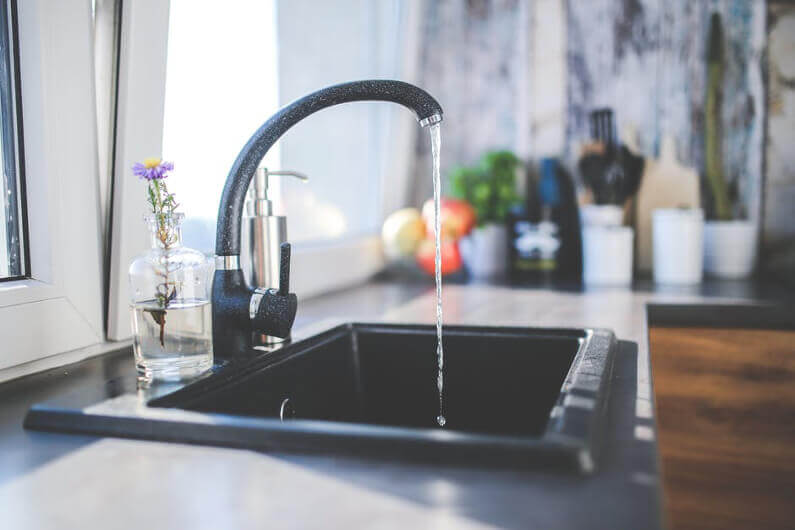When it comes to the intricate world of plumbing, most homeowners tend to focus on the big picture—pipes, drains, and water heaters. But often, it’s the seemingly small components—fixtures—that truly bring your plumbing system to life. Fixtures are the touchpoints between your home’s plumbing infrastructure and your everyday life. From faucets and sinks to showers and toilets, these components not only ensure that water flows properly but also define the style and functionality of your space. Whether you’re renovating your bathroom or building a new home, understanding plumbing fixtures and their role in your system is crucial. This article aims to provide a comprehensive guide on plumbing fixtures, covering everything from their types and materials to installation considerations and maintenance tips.
What Are Plumbing Fixtures?
In simple terms, plumbing fixtures are devices connected to a plumbing system that control the flow and drainage of water. These fixtures are responsible for allowing water to be dispensed, contained, or drained from various parts of the home. Fixtures are designed to be functional, but they also contribute to the aesthetics of a space. While some fixtures, such as faucets and showerheads, are used daily, others like toilets and bathtubs may be more occasional but no less important.
Plumbing fixtures come in a variety of shapes, sizes, and materials, and selecting the right one for your needs can make a significant difference in the overall performance of your plumbing system, as well as the visual appeal of your home.
Types of Plumbing Fixtures
There are several types of plumbing fixtures, each serving a unique purpose. Below, we explore the most common fixtures found in residential settings:
1. Faucets
Faucets are perhaps the most commonly used fixtures in any home. They control the flow of water in the kitchen, bathroom, laundry room, and other areas. Faucets come in a variety of designs, ranging from traditional to modern, and are typically made from materials like brass, stainless steel, or chrome.
There are different types of faucets, including:
-
Compression Faucets: These are the traditional models with separate handles for hot and cold water. They require the user to tighten or loosen the handles to control water flow.
-
Ball Faucets: Often found in modern kitchens, ball faucets have a single handle that controls both temperature and water flow.
-
Cartridge Faucets: Known for their ease of use, these faucets feature a single handle and are often found in modern bathrooms.
-
Ceramic Disk Faucets: These are newer and offer excellent durability, controlling water flow through a pair of ceramic discs.
2. Sinks
Sinks are integral fixtures in kitchens and bathrooms. They come in various sizes, materials, and designs, including undermount, top-mount, and pedestal sinks. The material of the sink is crucial for both durability and appearance. Common materials include:
-
Stainless Steel: Known for its durability and sleek look, stainless steel is popular in kitchen sinks.
-
Porcelain: Often found in bathrooms, porcelain sinks are easy to clean but can chip or crack if mishandled.
-
Composite: Made from materials like granite or quartz, composite sinks are durable and resistant to stains.
Choosing the right sink for your needs is key to both function and style. Deep sinks are great for kitchens, while shallow sinks may be more suitable for bathrooms.
3. Showers and Bathtubs
A bathroom’s shower or bathtub is more than just a place to clean yourself; it’s an essential fixture that determines the functionality and comfort of your daily routine. Showers typically consist of a showerhead, a mixing valve, and a drain, while bathtubs are designed for soaking and relaxation.
There are various types of shower and bathtub fixtures:
-
Showerheads: Available in a wide range of designs, including rain showerheads, handheld options, and multi-function models. Materials often include chrome, nickel, and stainless steel.
-
Bathtubs: Freestanding tubs, clawfoot tubs, and built-in bathtubs all come with different features, such as built-in jets for a more spa-like experience or ergonomic shapes for comfort.
4. Toilets
Toilets are one of the most important plumbing fixtures in any home. Today’s toilets come in various models, each with different features, such as water-saving mechanisms, bidets, and dual-flush systems. Toilets are usually made from ceramic or porcelain, materials that are durable, resistant to staining, and easy to clean.
The primary types of toilets include:
-
Two-Piece Toilets: These are the most common, consisting of a separate tank and bowl. They are easy to repair and install.
-
One-Piece Toilets: More streamlined and aesthetically pleasing, these toilets feature a single, solid piece, making them easier to clean.
-
Wall-Hung Toilets: Mounted on the wall, these toilets save space and offer a modern look, though they require special installation.
5. Bidets
Bidets, though not as common in every home, have gained popularity for their hygiene benefits. These fixtures are typically installed next to the toilet and provide a stream of water for cleaning purposes. Modern bidets come with adjustable temperature and pressure settings, and they are increasingly integrated into toilet designs.
Materials for Plumbing Fixtures
The material used for plumbing fixtures is crucial for both their functionality and longevity. Some materials are more durable and resistant to corrosion than others, while some offer a particular aesthetic that suits specific design preferences.
-
Brass: Known for its resistance to corrosion, brass is a common material used in faucets and valves. It is durable and often treated with a layer of chrome for added shine and protection.
-
Stainless Steel: This material is used in many modern fixtures, offering a sleek, polished appearance while being resistant to rust and staining.
-
Chrome: Chrome-plated fixtures are commonly used in kitchens and bathrooms because of their bright, shiny appearance and easy-to-maintain surface.
-
Copper: Copper has antimicrobial properties, making it a popular choice for faucets and pipes. It also has a distinctive look that many homeowners find appealing.
Installation Considerations
Installing plumbing fixtures can seem like a straightforward task, but it requires careful attention to detail. Improper installation can result in leaks, water damage, and a host of other issues. Here are some factors to consider:
-
Correct Sizing: Ensure that the fixtures you choose are compatible with the size of your plumbing system. For instance, faucets and showerheads should fit the existing pipes.
-
Professional Installation: While some fixtures, like faucets or showerheads, can be installed by DIYers, more complex installations, such as bathtubs or toilets, often require the expertise of a professional plumber to ensure they are done correctly.
-
Water Efficiency: Many modern plumbing fixtures are designed to save water. Look for fixtures with the EPA’s WaterSense label, which indicates that they meet water-saving standards without sacrificing performance.
Maintenance of Plumbing Fixtures
Like any part of your home, plumbing fixtures require regular maintenance to ensure they remain functional and aesthetically appealing. Common maintenance tasks include:
-
Cleaning Faucets and Sinks: Hard water deposits and soap scum can build up on faucets and sinks over time. Regularly cleaning these fixtures with mild soap and a soft cloth can prevent damage.
-
Inspecting for Leaks: Leaks around faucets, toilets, and showerheads can waste water and cause significant damage. Periodically check for signs of leakage and address any issues promptly.
-
Replacing Worn Parts: Many plumbing fixtures come with components that wear out over time, such as washers, seals, and gaskets. Replacing these parts as needed can extend the life of your fixtures.
Conclusion
Plumbing fixtures are more than just functional elements in your home; they are essential components that ensure your plumbing system works efficiently and effectively. From faucets and sinks to showers and toilets, selecting the right fixtures for your needs and ensuring they are installed and maintained properly is critical to your home’s water system. By understanding the different types of fixtures, materials, and installation considerations, you can make informed choices that enhance both the functionality and aesthetic appeal of your home’s plumbing system. Whether you’re upgrading your kitchen, bathroom, or laundry room, plumbing fixtures are key to achieving both style and practicality.

